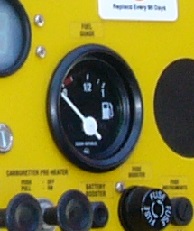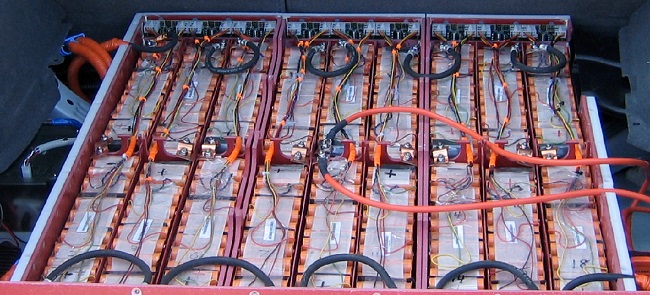 Ready to Go Electric?
Ready to Go Electric?
Howard Deevers
Electric (battery powered) cars have been around for a long time, even going back to Henry Ford’s time. His wife drove a battery operated car. The Tesla Company makes a modern all battery powered auto today. It has great styling, good performance, and NO gasoline power. It is not a hybrid. The Nissan Leaf is another example of an all-electric car.
 Now, it looks like aviation is going into the new era of battery powered aircraft. A few years ago I read an article about a plan to make a Cessna 172 all electric; sounded interesting. The electric motor, nearly the same horse power as the standard Lycoming engine, would weigh about the same. The batteries could be located in the wings, just as the fuel is now, and weigh about the same as the full fuel also. So, weight and balance would not change very much and the flying characteristics would remain about the same.
Now, it looks like aviation is going into the new era of battery powered aircraft. A few years ago I read an article about a plan to make a Cessna 172 all electric; sounded interesting. The electric motor, nearly the same horse power as the standard Lycoming engine, would weigh about the same. The batteries could be located in the wings, just as the fuel is now, and weigh about the same as the full fuel also. So, weight and balance would not change very much and the flying characteristics would remain about the same.
We all know that aviation fuel weighs 6 pounds per gallon. 50 gallons of full fuel will weigh 300 pounds, but you use up that fuel as you fly. Batteries are still going to weigh the same when you land as they did when you started, even if you used all of the amps they had to give. And, you cannot drain fuel to change your load before take-off.

George Bye, CEO of Aero Electric Aircraft Corp, introduced the Sun Flyer at the EAA Sun ‘n Fun in Florida this year, with a promise of a proof of concept aircraft to be at Oshkosh this coming summer. From the pictures that I saw of the plane, it is a well-designed 2 seat trainer, and the performance specs are impressive as well. A flight school ordered 30 of the planes at Sun ‘n Fun and he has deposits for over 30 more. Electric aviation is on the way!
Almost everything I deal with in my business is battery operated in one way or another. So, every time I hear about something new in battery technology, I read about it. The Sun Flyer will use 7 Lithium- ion batteries and be able to fly about 3 hours on a full charge. The wings are covered in solar panels that will help to keep the batteries charged, but not enough to fly longer. In fact, it will take the solar panels 3 days to fully recharge the batteries, if that is all you have available. Special recharging stations will have to be provided to recharge the batteries in a quicker time in order to use the plane again sooner. For a trainer, several flights a day would be required. The big advantage: the recharging costs would be about $1.00 per hour, compared to the fuel cost of about $50.00 to $70.00 per hour for aviation fuel power 2 seat trainers.

Batteries have been around and in constant experimental stages from the beginning of electric technology as we know it. We do not have space or time to discuss all of the battery technologies in an article as short as this. Battery technology in a 4 year Electrical Engineering course at a technical college would be a semester long and only give you enough information to have a basic understanding of batteries, not enough to go out and start inventing new batteries. Lithium-ion (Li-ion) batteries are hailed as the current savior in new battery technology. They do give more power for less weight, but they have limitations as well. And, there is more than one technology involved in Li-ion batteries; they are not all the same. Even Boeing had their problems with Li-ion batteries in their new Dreamliner and that cost them millions of dollars to satisfy the FAA’s requirements to prove they had fixed the problem.
All batteries have a limited life, and Li-ion are no different. They are also more expensive compared to other batteries. When the electric autos need battery replacements, the owners usually look to unload the car. Will that happen in airplanes as well? We don’t know the costs just yet. Without more information on the life and replacement cost of the batteries, it is difficult to calculate the amortized per flight hour expense for replacing them. You can bet that the battery replacement is not going to be something that the owner can do. Batteries will need to be secured, and must be properly connected, and that will probably required a trained mechanic. Don’t worry; there will be an FAR for this soon enough.

Other factors will need to be addressed as well, such as temperature limitations. Batteries operate differently in hot and cold environments and that will make a difference. Long time storage is another factor. Recycling of expended batteries will need to be addressed. Charging stations will need to be installed at all of the places these planes will fly into, not just the home base. I am not saying that these factors will stop the production, experimentation, and future development of electric powered aircraft. We are only at the beginning. Would I fly a battery powered airplane? If I get the chance I will be on board in a flash!
Don’t look for anything the size of a Boeing 737 or larger to go electric any time soon. There is a lot of experimentation to be done before large scale battery powered airplanes will be in the sky. Who knows what the next 50 years will do for us? If we don’t try, we never get there.
I keep looking for that wonderful breakthrough in battery technology that we all have hoped for. A battery that is lightweight, provides lots of power for long periods, recharges quickly, and is inexpensive. We can dream can’t we? If mankind ever learns how to harness the power of lightning, then all of the power requirements on earth will be satisfied forever.
Ready to Go Electric?